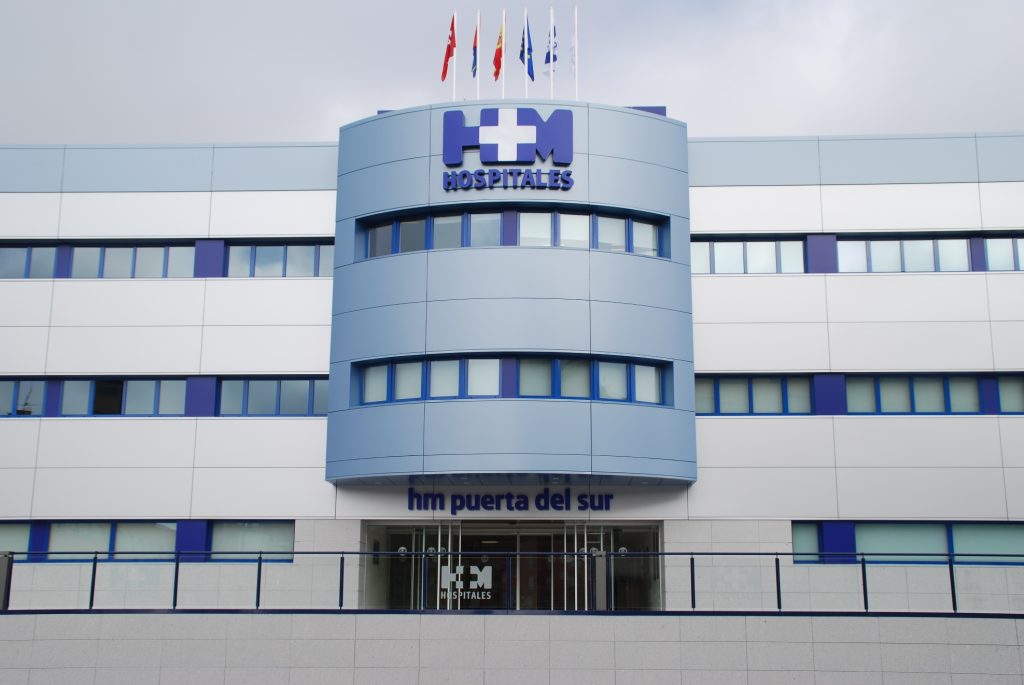• This unit will offer personalized and precision treatments without the need for hospital admissions for patients with prostate and neuroendocrine.
• The Group has updated its facilities at the Hospital Universitario HM Puerta del Sur to be able to provide outpatient care to patients undergoing tratments with Lutetium-177 or Actinium-225.
• HM Puerta del Sur is once again a pioneer in national healthcare as it was the first hospital in Spain to install a PET-MRI in 2014, which substantially improved the diagnosis of thousands of patients and made the centre a benchmark in research.
HM Hospitales has become a pioneer in the private healthcare sector in Madrid by launching the first Outpatient Metabolic Therapy Unit at the Hospital Universitario HM Puerta del Sur (Móstoles), and thus becomes one of the first centres of excellence in Teragnosis in Spain. Thanks to this unit, patients with prostate and neuroendocrine tumours receive personalised and precision treatments without the need for hospital admissions, which represents an obvious benefit for them and their environment.
Theragnosis (combination of diagnosis and treatment) is a procedure used in Nuclear Medicine consisting of administering radioisotopes to the patient, which will form the images, which will help specialists to prevent, diagnose and treat diseases, mainly oncological.
Initially, these radioisotopes, called radioligands, have the characteristic of adhering to some tumour cells of cancer patients. In doing so, they draw an image of the tumour thanks to the diagnostic technology of PET (positron emission tomography) or SPET (scintigraphy). In a second phase (treatment phase) these radioligands, this time equipped with other radioactive isotopes, are administered to the patient to destroy only the tumour cells, without damaging the rest of the cells or tissues.
“To date, radioactive iodine I-131 has been used for therapeutic purposes in nuclear medicine, what we call radiometabolic therapy, which has been used for more than seven decades in the treatment of thyroid cancer. This radiopharmaceutical has among its physical characteristics, the mandatory need for patients to be admitted to leaded rooms, until the patient discards this radioactive substance from his body. The appearance of new radiopharmaceuticals, such as Lutetium-177 or Actinium-225, for patients with Neuroendocrine Tumors and Prostate Tumors , and our accumulated experience has taught us that these radiopharmaceuticals can be administered on an outpatient basis, that is, without the need for hospitalization,” says Dr. Lina García Cañamaque, head of the Nuclear Medicine Service at the HM Puerta del Sur University Hospital.
This technique is in clear expansion and the arrival of new radiopharmaceuticals such as Lutetium-177-SST or Actinium-225-PSMA with more favorable physical characteristics, has eliminated the need for hospital admission, being able to treat patients in day hospitals.
“For this reason, scientific societies such as the European Society of Nuclear Medicine (EAMN) or the American Society of Nuclear Medicine and Molecular Imaging (SNMMI) have opted for the conversion of some Nuclear Medicine services, for the creation of Centers of Excellence in Teragnosis,” confirms Dr. García Cañamaque.
In view of this circumstance, the Group has renovated its facilities in HM Puerta del Sur to be able to provide outpatient care to patients undergoing treatments with Lutetium-177 or Actinium-225 and has thus formed the first Outpatient Metabolic Therapy Unit of the private healthcare system in Madrid and one of the first in Spain. Thanks to this milestone, this hospital is already considered a Teragnosis Center of Excellence.
Pioneers and research
In the same way, HM Puerta del Sur is once again a pioneer in national healthcare as it was the first hospital in Spain to install a PET-MRI (positron emission tomography – magnetic resonance imaging), which substantially improved the diagnosis of thousands of patients. The main characteristic of PET-MRI is that it shows the anatomy, organs and metabolic and cellular activity of the patient, reducing the radiation received by more than 80%. This diagnostic technology is mainly used in Oncology and Neurology, although it has other applications in areas such as Cardiology or infectious-inflammatory pathology.
“The start-up of this unit will also allow this centre to maintain and increase its research capacity, as it will be possible to carry out multiple clinical trials. This is another of the necessary requirements, apart from diagnosis and treatment, to be considered a Center of Excellence in Teragnosis in Madrid,” concludes Dr. Virginia Soler, medical director of the Hospital universitario HM Puerta del Sur.











